SINAIS
PROGRAMME 2
Sala (S8) Palexco | Friday June 7th | 1:00 pm | Free entry to all venues until full capacity. It will not be possible to enter the venues after the screening has started.
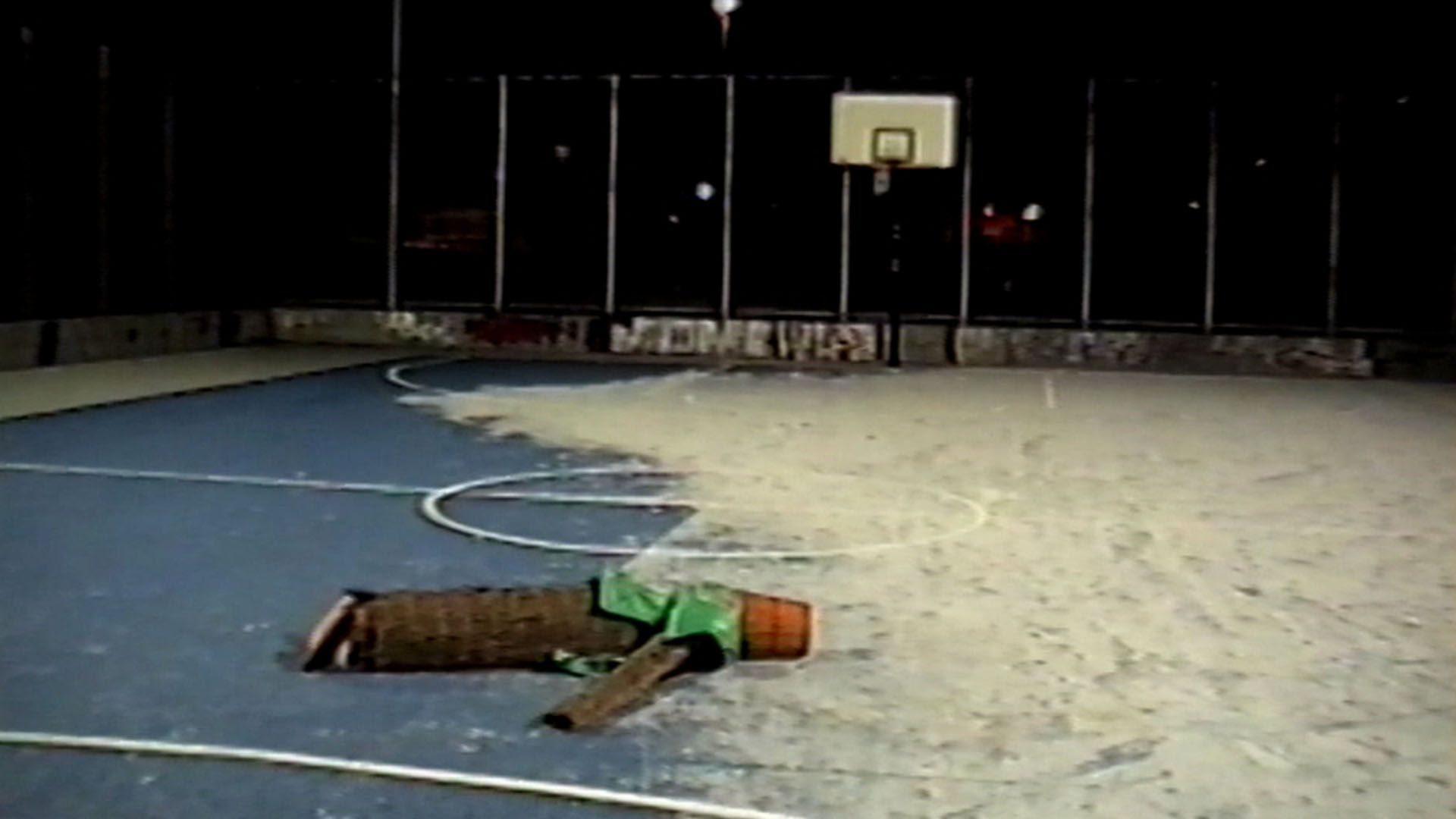
HOMBRE DE PALO
Pablo Agma | 2024 | Spain | HD | 10 min
Gestated in the fibres of environmental exploitation and the wheels of capitalist machinery, the stick man appears as a personification of the fears and complexities of our era. We witness fragments of his existence in a film disguised as a defective, forgotten VHS tape documenting a lonely struggle for survival in a world that breeds and rejects its own monsters. (Pablo Agma)

KATALIPSI
Elaine Sier | 2023 | Spain | Super 8 to HD | 8 min
A police officer infiltrates social movements and squatters in Barcelona, but disappears without a trace, taking with him their most precious thing: their privacy. Do we really know who is around us? (Elaine Sier)
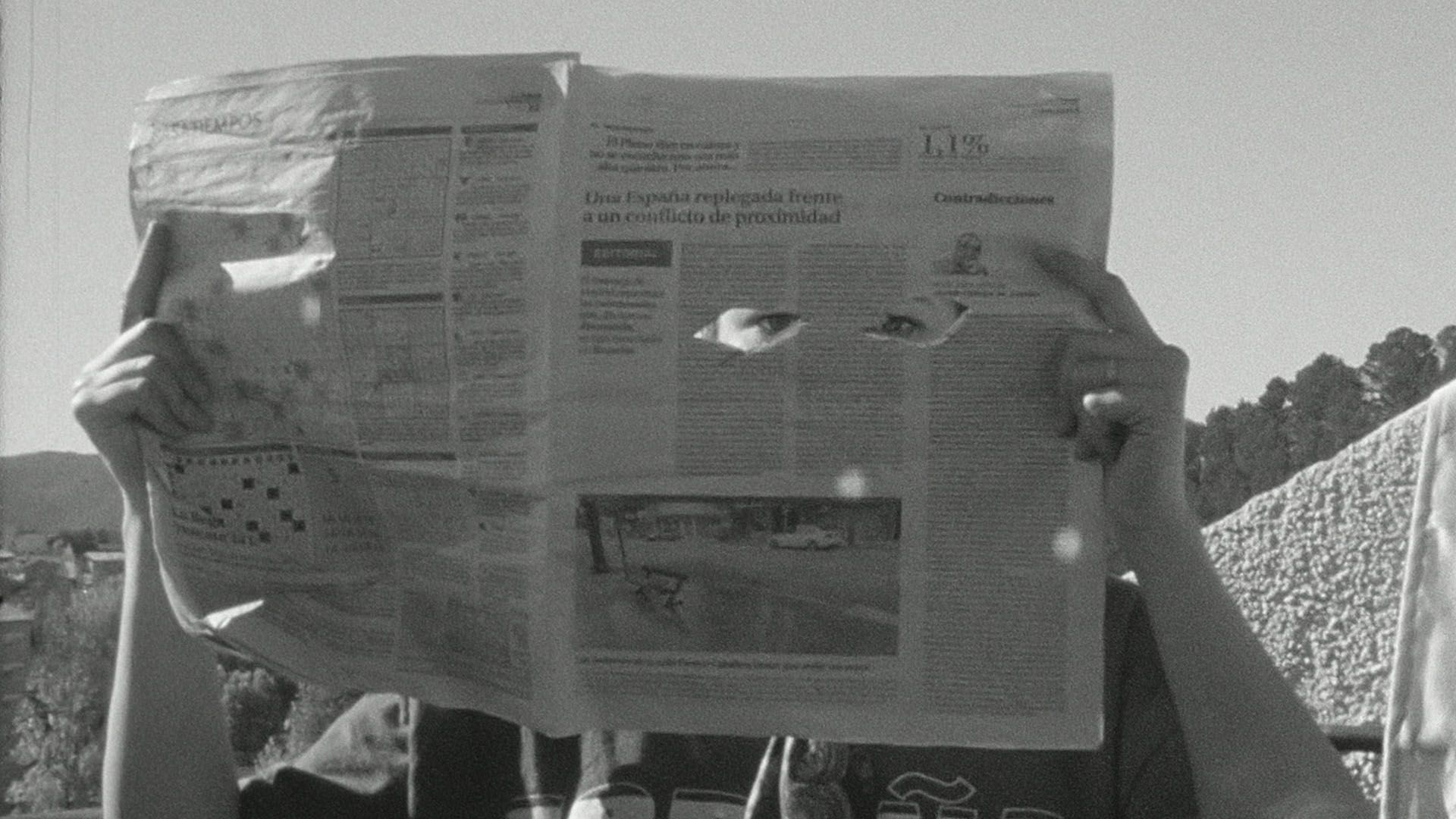
TRIPLE TANGO MANCHEGO
Colectivo Craneal (Marta Solera Picazo, Aitana de Dios, Patri de la Plaza) | 2024 | Spain | Super 8 | 5 min
In the city centre of Cuenca, on the banks of the Júcar River, meetings take place among folk minstrels who do not clarify anything but who talk about communism, nationalism, genderism, chessism, cat-tism and Manchego-ism. The voice of the night watchman can be heard between cigarettes that have to be put out when the last cuplé begins to sound and this who’s who ends. (Colectivo Craneal)
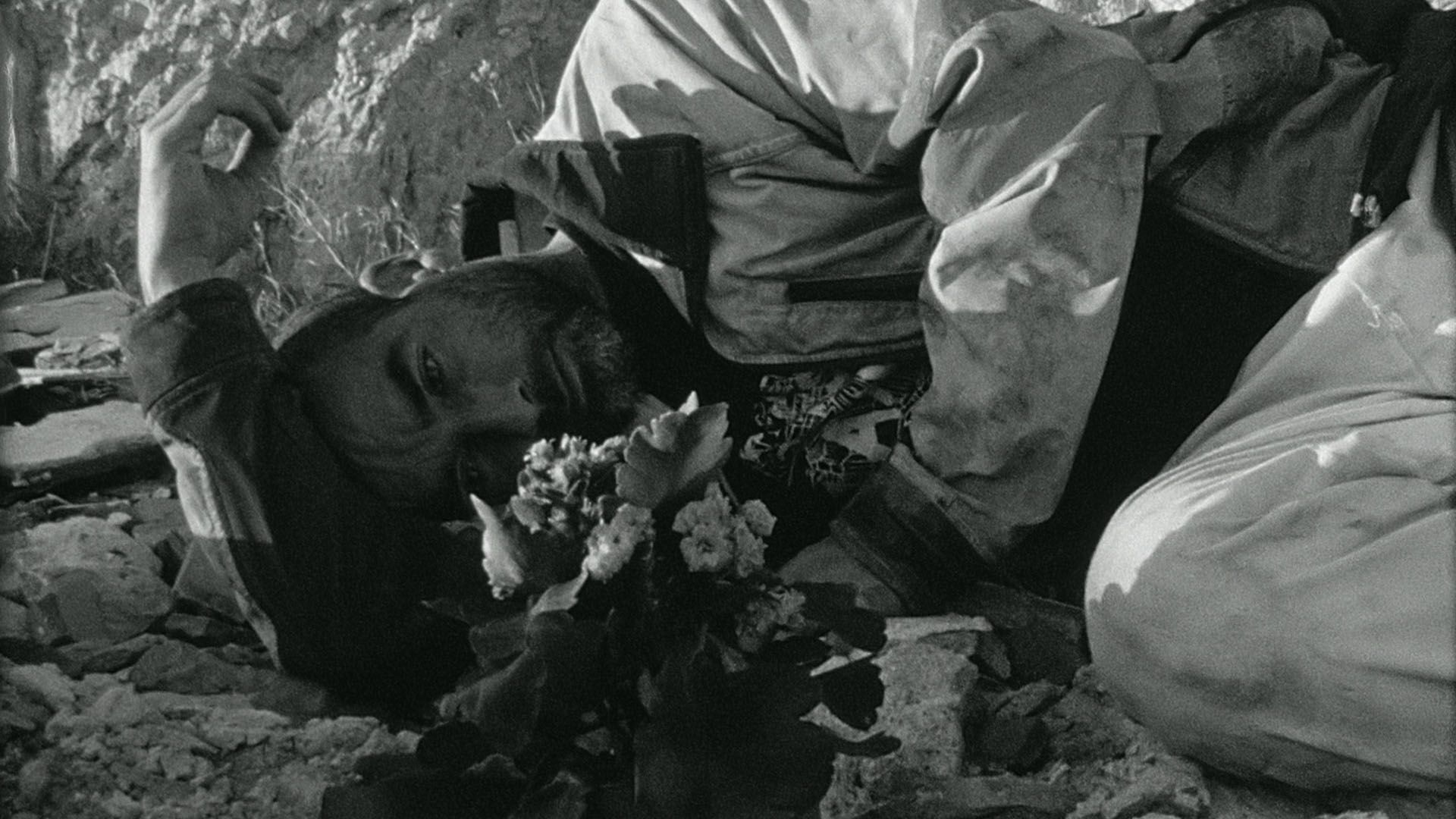
BIVALVA
Celia Kiroga Rincón | 2024 | Spain | Super 8 | 3 min
Bivalves are two jaws, two worlds that connect, that influence each other. What one dreams of is said to be the unattainable, the fantasy. Reality as its antonym. Not to mention that these two worlds, these two shell halves, are always linked by wiring. We dream of what we think, of what we don’t know or think, but we think about, what we journey through, what we yearn for. We dream of tenderness and also of nightmares. But what becomes of dreams when the reality dug up is fictitious? (Celia Kiroga Rincón)
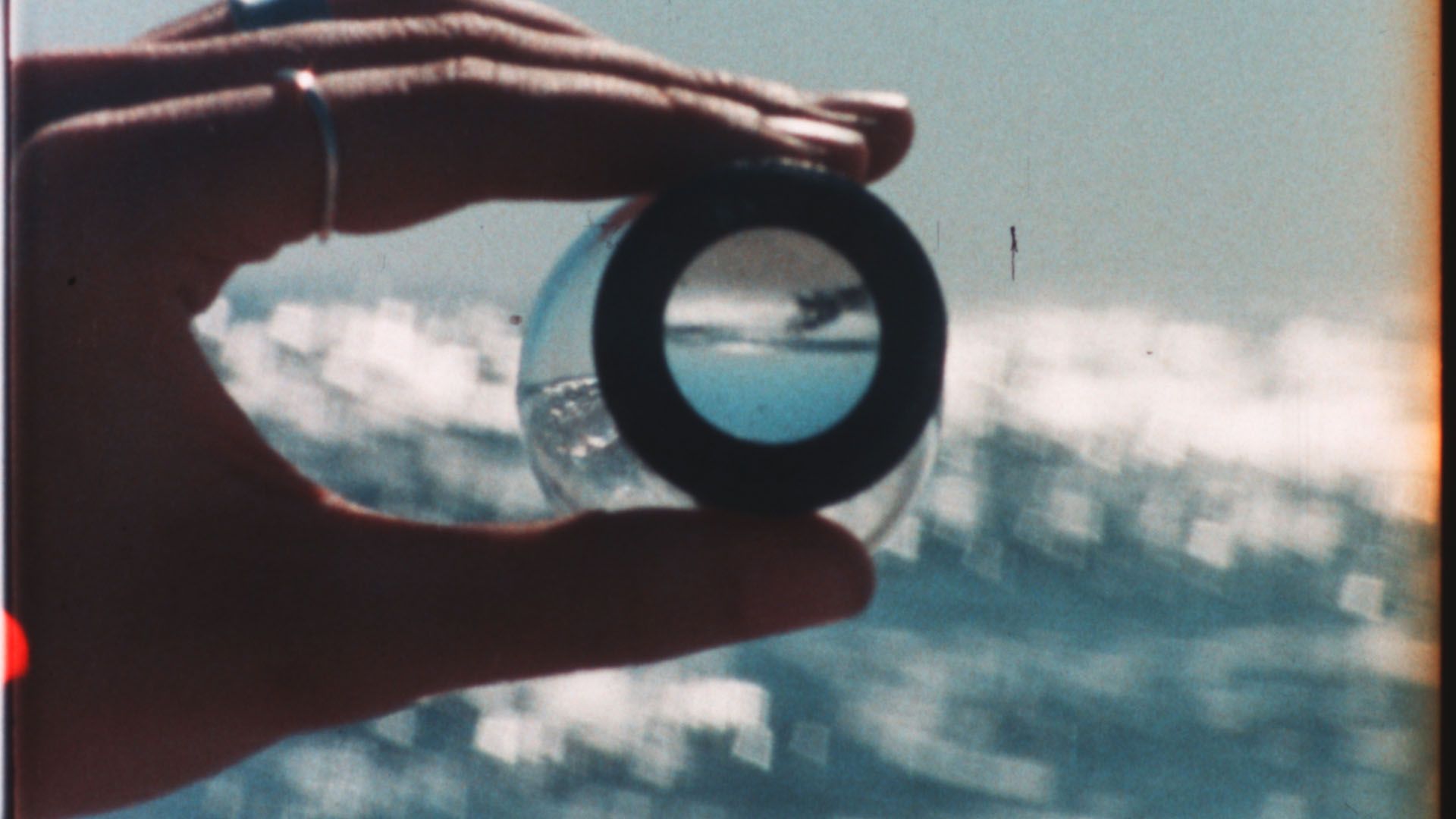
IMPRESSIONS OF LIGHT
Juliana Julieta | 2023 | Portugal, USA | 16 mm | 4 min
The work started through a fascination with reflective surfaces as a way to understand identity itself as something always contextual, mutable, distortable, fragmentary, metamorphic or, simply put, highly reflective and undergoing permanent re-creation. Waves crashing, disintegrating the whole, reassembling and maintaining some constitutive or foundational unity, even for something that is always in flux and taking on new shapes and manifestations. “el camino es una red” (“the path is a network”), unstable, full of rhizomatic connections, something we weave as we journey forward. (Juliana Julieta)
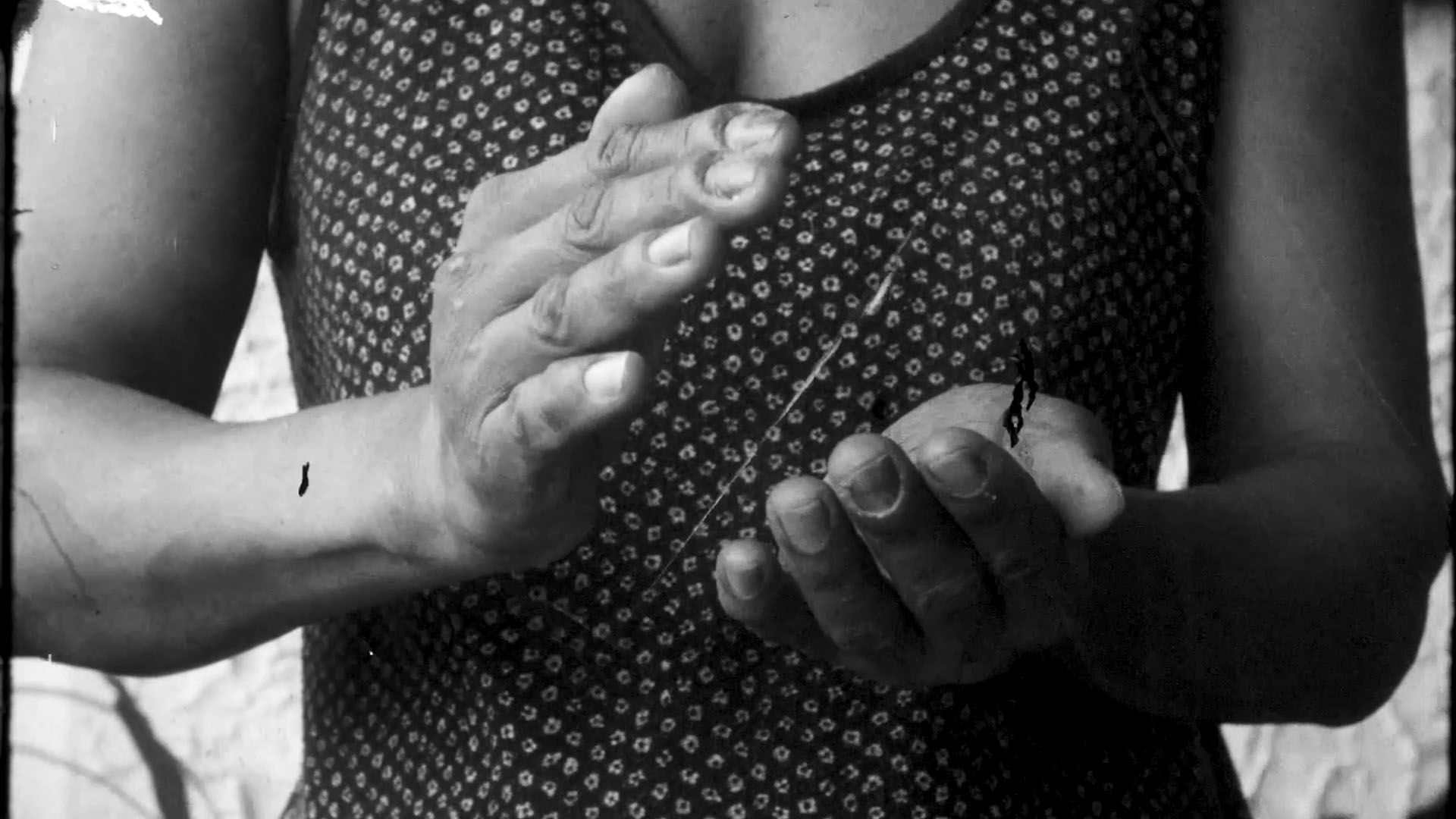
LA MEMORIA DE LAS FRUTAS (DIÁSPORA)
Claudia Claremi | 2024 | Spain | 16 mm to HD | 3 min
The memory of fruit is a project that has been studying the fruits of the Caribbean since 2015 through the fabric of affections surrounding them. The memory of fruit (diaspora) is a film made from interviews conducted in Madrid in 2023. Evoking types of fruit that one yearns for because they have disappeared from everyday life or because they refer directly to a place or moment in life, the film proposes an activation of sensory memory.

LEGERDEMAIN
Carlos Vásquez Méndez | 2023 | Spain | 16 mm to HD | 3 min
Legerdemain is a work commissioned by the CCCB (Centre for Contemporary Culture of Barcelona) to be included in a programme on film and music for both adults and children. This short film is made up of sound essays produced by the fingers of a hand touching surfaces, pressing buttons and activating everyday artifacts that are undergoing a process of obsolescence, following a time cycle of 56 beats per minute.

THE WORD WAS DELETED
Esperanza Collado | 2024 | Spain | 16 mm × 2 | 15 min
“Heartbeat creates the scope. Space inside the eye. We are nerve endings of a large retina. Perception is corpuscular and wave-like. The word was deleted. Light and sound are frequencies, and thought is communicated tactilely. Light, colour, shapes, intervals, resonances, moving sympathies till the conversion and fusion […]” (José Val del Omar, Latido crea el ámbito, undated)
The Word Was Deleted is an activation of Collado’s recent work Trágame nube (Swallow me up cloud), involving 16 mm projections, original audio recordings and a fictitious interview. Trágame nube consists of a double projection of 16mm films; two sides of a single film unit that explores the “other cinema” that hides in the intervals between frames. This project was commissioned for the exhibition “Cinema of Sensations: The Never-ending Screen of Val del Omar” at the Museum of the Moving Image in New York in 2023, focusing on the work of 20th century Spanish filmmaker and inventor José Val del Omar.
Shot with Bruno Delgado Ramo and with participation from Paula Guerrero, the film has a three-part structure. The first part is a game of tag with the filmmaker Bruno Delgado Ramo at the Alhambra palace in Granada, where Val del Omar shot Aguaespejo granadino (Granada watermirror 1955). The second and central part is entirely devoted to a selection of Val del Omar’s original documents kept at the library of the MNCARS in Madrid. The film apparatus presented on the third part of the film was shot in Bilbaoarte and presents the syntax of cinema as sculpture and performance in a loose association with Val del Omar’s emblematic laboratory PLAT (Picto-luminous-audio-tactile).
Credits: audio recordings courtesy of the Val del Omar Archive.
SINAIS
VISION & MOTION
The Lumière cinematograph was not the only one that was invented, but it was the most successful. One of the reasons for its success is that the original wooden box, in addition to being used for filming, for recording the world, was also used for projecting. This duality in which the same device absorbs light from its environment and returns it to us by expelling light, enables us to begin to talk about the selection for Sinais, which this year is split in two sessions like the heads and tails of a coin. In one of them, the camera records what is real, modifying it through framing, montage or other camera techniques. In the other, reality is modified to record it with the camera. The camera as a modifying or amplifying element, then, is the first direction we use to talk about this group of films that blend themes and generations, students and educators in community.
The first programme is therefore the one most rooted in observation of the world as it is. And in that observation, all of the films running through the programme are heavily rooted in specific geographical places, marked by the relationship of the camera person with them. Two possible ways of addressing the city of Madrid, as overwhelming as it is harsh at times, are those of Pablo Useros and Pablo Marín. In the case of Useros in INSTRUCTIONS FOR A SELF-PORTRAIT, the artist seems to want to integrate and yet isolate himself from his environment at the same time, in an act of self-absorption in public space. Based on a serial premise and with specific game rules, Useros evokes the mechanical games of Dietmar Brehm. Marín, for his part, in MATERIA VIBRANTE, looks for the (few) nooks and crannies for nature in the city, but also for the miracles of light between buildings, the thousand and one ways to become attached to a place, considering it to be a living, breathing entity. Burbank is a city in Los Angeles County, where Rocío Mesa lived for several years. BURBANK NEONS is an in-camera editing exercise of hypnotic and colourful overlays in search of magic in Mesa’s everyday life, evoking the spirit of William Klein. Colour in the midst of darkness is something that Iago Lourido captures in VELOS NA TEBRA, a film of lights and shadows that emulates silent cinema in its tone, where the most spiritualist side of the land of San Sadurniño in Galicia (in the context of the mythical and fruitful Chanfaina Lab) comes to light. Pere Ginard has been sighting supernatural creatures for years in the midst of the most varied everyday situations. Made with found material as its basis, SIGHTINGS reveals the sea monsters that go unnoticed on the coasts of Barcelona and Mallorca. Along this line of extracting the other-worldly from the everyday using cinema, Yasmina Farhani Luaces (involved in the workshop given by Berio Molina at Novos Cinemas) in A TERRA TEN GLITCH brings out the strange atmospheres generated by the particles of the earth, the folding of rural reality falling out of control. The following three films in one way or another evoke the connection between manual crafts, cinema and the territory. Beatriz Freire decodes the secret rhythms of fishing net weaving in SANTA POLA, where the rhythms of the weavers’ hands evoke the working of the camera and editing. In CADA GESTO, Valentina Alvarado creates a unique portrait of Barcelona via what is happening in her workshops, through the loving filming of the hands of those who work there. Fernanda Vicens becomes a gardener herself in her LA JARDINERA film in which pruning, watering and fertilizing become a job of attentive care for the flowers frame by frame, thus creating incredible bouquets in the public’s eye. Vicens’ film sketches a kind of secret garden in nature, as is done by Brenda Boyer and Beatriz Higón, and Héctor Gardez. In a kind of clearing in the private forest, in CHROMATIC PASSAGE #2: CULEBRA Boyer and Higón experiment with a surprising chromatic separation made in-camera based on overlays and filters, creating a hallucinating, intimate landscape. For his part, in OJO DE AGUA Gardez delves into the surroundings of a river in a beautiful vision punctuated by overlays and frame-by-frame work, in search of his island (Tenerife) on another distant island that welcomes him (Cuba).
The second programme’s common thread is the idea of staging, which also points to the fine line that sometimes separates performance or happening from experimental cinema (as we can also see through the cinema of Narcisa Hirsch). For example, starting with Pablo Agma’s STICK MAN, a disruptive element in the streets of the city, a scarecrow that tries to put passers-by face-to-face with the effects of the world’s cruelty. In the case of KATALIPSI, by Elaine Sier, it is the opposite story: the hidden monster, and the staging of a feigned activism that ransacks the privacy of the fighting groups. TRIPLE TANGO MANCHEGO, by the Colectivo Craneal collective (made up of Marta Solera Picazo, Aitana de Dios and Patri de la Plaza from the famous Faculty of Fine Arts of Cuenca) is partly a game and partly a performance with echoes of queer and punk, in the playful, subversive spirit of figures like Jack Smith and Mara Mattuschka in their unapologetic modification of days. BIVALVA, also from Cuenca thanks to Celia Kiroga Rincón, uses the setting of a burned house, previously inhabited, so as to confuse the territory of dreams with that of reality in imaginative, surreal stagings. Juliana Julieta, for her part, also modifies reality but in keeping with what it is possible to do in front of the camera by her own hand: the world contained in a spoon or a light bulb. Both Claudia Claremi and Carlos Vásquez Méndez roll out a veritable mise-en-scène of hands in their films, with different implications. In THE MEMORY OF FRUIT (DIASPORA), Claremi condenses the feeling of migration by evoking tropical fruit. Those hands touch, stroke and weigh up invisible fruit, while we hear the testimonies of those who, thinking about the fruit, construct a sensory memory of the home they left behind. In LEGERDEMAIN, Vásquez Méndez activates different sounds of materials and devices in an intelligent manoeuvre that examines the foundations of sound in cinema through synchrony (or lack of it). This block is rounded off with the double screening of THE WORD WAS DELETED by Esperanza Collado, with live sound. The double-screen dialogue of different tropes concerning the work of Val del Omar (his roots in Granada and his famous PLAT laboratory) is also constructed upon the basis of performative stagings: the one carried out as a game of hide-and-seek or of chases in the Alhambra, and the carefully orchestrated one for the camera with the laboratory’s documents and instruments.
Elena Duque
